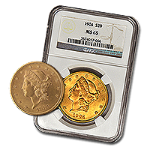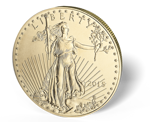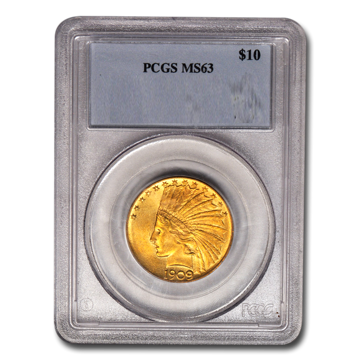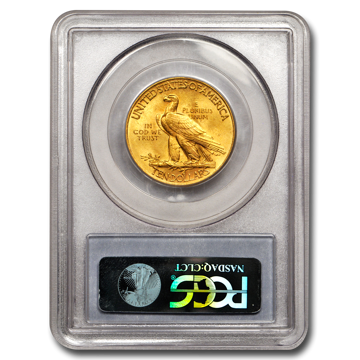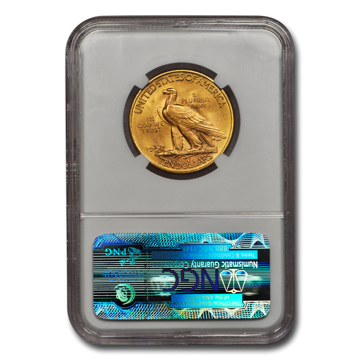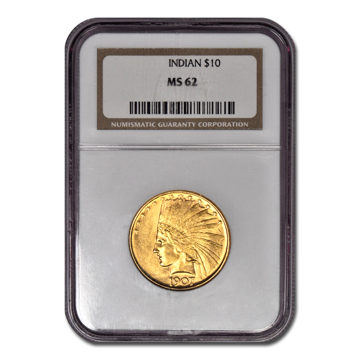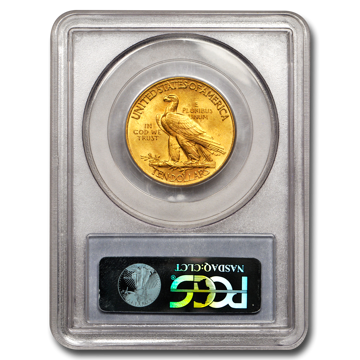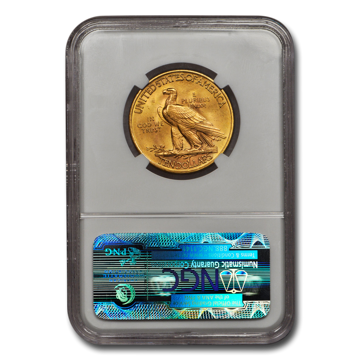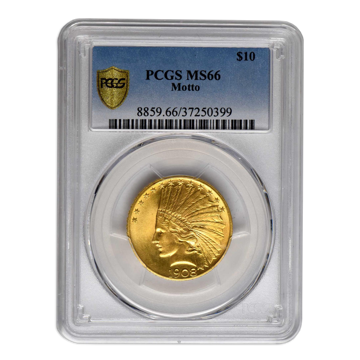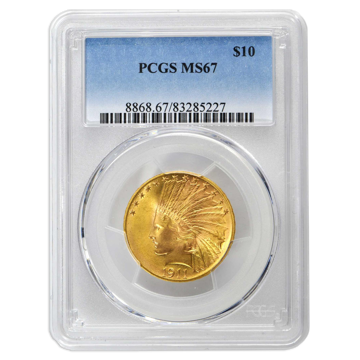- 888-696-4653
-
888-696-4653
Call Us
-
0
Cart
-
Open Account/Login
Open Account/Login
The History of the $10 Indian Head Gold Coin
The $10 Indian gold piece, un-specifically referred to as a $10 Eagle because of U.S. legislation that defined the $10 denomination specifically as an "Eagle", has a long and rich American History. The design and production of this coin was a direct result of then President Theodore Roosevelt intervening in the normal operations and productions of the U.S. Mint. "Teddy" Roosevelt felt that the American coinage was of a design and artistic quality that was inferior to the image of America that he was striving to achieve at home and abroad. Rather than ask the U.S. Mint to redesign new coins, he successfully lobbied to have a personal friend of his, who happened to be a sculptor, design four new gold coins as well as the Cent coin.
This friend was Augustus Saint-Gaudens. Saint-Gaudens became the first non-U.S. Mint Employee to design a legal tender coin. If Saint-Gaudens had known the amount of backlash and resistance he would receive for accepting this personal request, perhaps he would have respectfully declined President Roosevelt's request.
1907NM $10 Indian Gold Coin MS62
1907NM $10 Indian Gold Coin MS62
- Date of mint: 1907
- Mint: US Mint
- Not IRA Eligible
- .90 Purity GOLD
- Origin: United States
- Stock Photo
1907NM $10 Indian Gold Coin MS63
1907NM $10 Indian Gold Coin MS63
- Date of mint: 1907
- Mint: US Mint
- Not IRA Eligible
- .90 Purity GOLD
- Origin: United States
- Stock Photo
1907NM $10 Indian Gold Coin MS64
1907NM $10 Indian Gold Coin MS64
- Date of mint: 1907
- Mint: US Mint
- Not IRA Eligible
- .90 Purity GOLD
- Origin: United States
- Stock Photo
1907NM $10 Indian Gold Coin MS65
1907NM $10 Indian Gold Coin MS65
- Date of mint: 1907
- Mint: US Mint
- Not IRA Eligible
- .90 Purity GOLD
- Origin: United States
- Stock Photo
1908DNM $10 Indian Gold Coin MS62
1908DNM $10 Indian Gold Coin MS62
- Date of mint: 1908
- Mint: US Mint
- Not IRA Eligible
- .90 Purity GOLD
- Origin: United States
- Stock Photo
1908DNM $10 Indian Gold Coin MS63
1908DNM $10 Indian Gold Coin MS63
- Date of mint: 1908
- Mint: US Mint
- Not IRA Eligible
- .90 Purity GOLD
- Origin: United States
- Stock Photo
1908DNM $10 Indian Gold Coin MS64
1908DNM $10 Indian Gold Coin MS64
- Date of mint: 1908
- Mint: US Mint
- Not IRA Eligible
- .90 Purity GOLD
- Origin: United States
- Stock Photo
1908DNM $10 Indian Gold Coin MS65
1908DNM $10 Indian Gold Coin MS65
- Date of mint: 1908
- Mint: US Mint
- Not IRA Eligible
- .90 Purity GOLD
- Origin: United States
- Stock Photo
1908DNM $10 Indian Gold Coin MS66
1908DNM $10 Indian Gold Coin MS66
- Date of mint: 1908
- Mint: US Mint
- Not IRA Eligible
- .90 Purity GOLD
- Origin: United States
- Stock Photo
1908DNM $10 Indian Gold Coin MS67
1908DNM $10 Indian Gold Coin MS67
- Date of mint: 1908
- Mint: US Mint
- Not IRA Eligible
- .90 Purity GOLD
- Origin: United States
- Stock Photo
1908DWM $10 Indian Gold Coin MS62
1908DWM $10 Indian Gold Coin MS62
- Date of mint: 1908
- Mint: US Mint
- Not IRA Eligible
- .90 Purity GOLD
- Origin: United States
- Stock Photo
1908DWM $10 Indian Gold Coin MS63
1908DWM $10 Indian Gold Coin MS63
- Date of mint: 1908
- Mint: US Mint
- Not IRA Eligible
- .90 Purity GOLD
- Origin: United States
- Stock Photo

